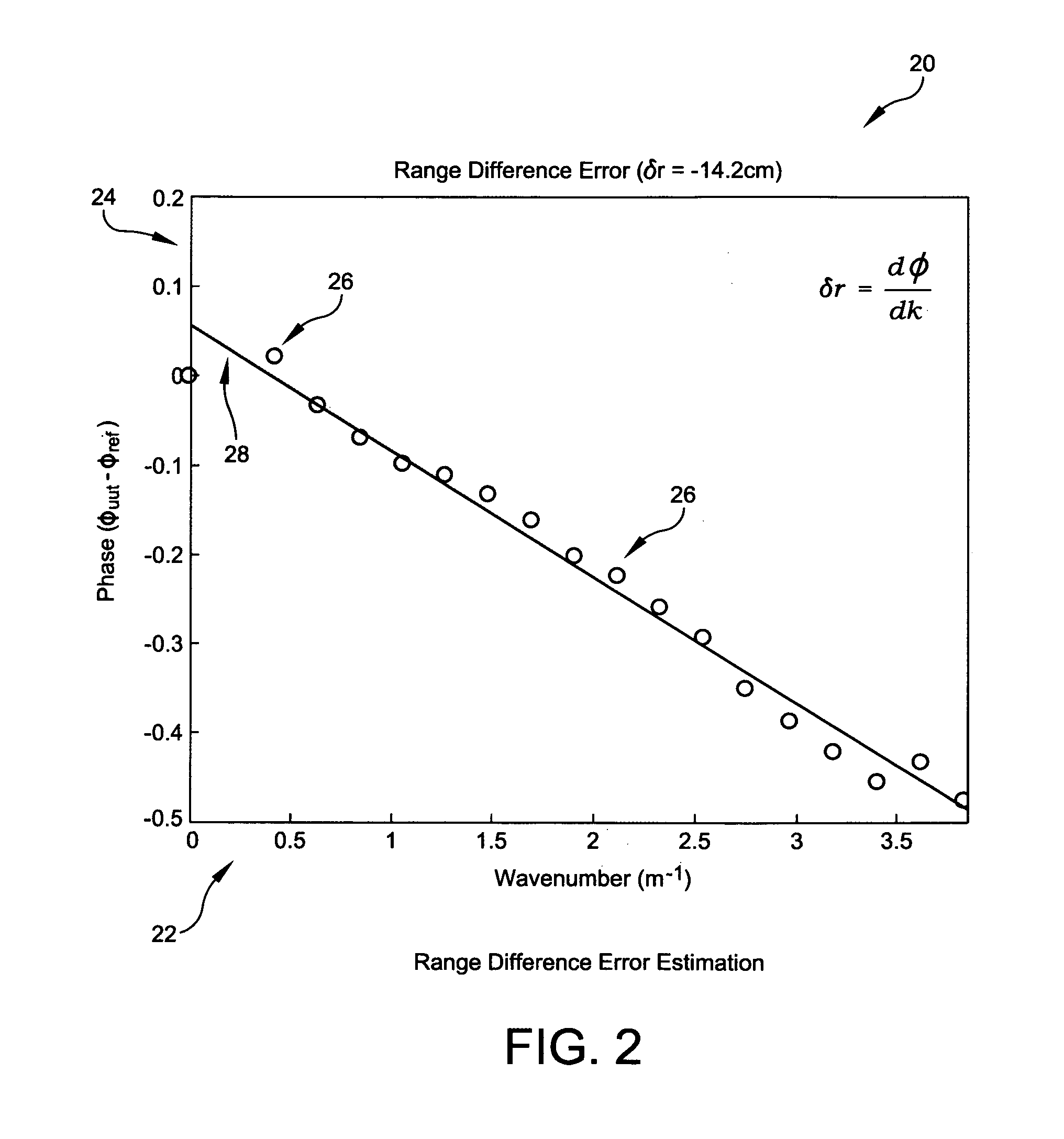Method for calibrating a plurality of data channels in a vector sensor
- Summary
- Abstract
- Description
- Claims
- Application Information
AI Technical Summary
Benefits of technology
Problems solved by technology
Method used
Image
Examples
Embodiment Construction
[0020]Referring now to the drawings, and more particularly to FIG. 1, a diagram of a test system is illustrated and referenced by numeral 10. The test system 10 includes an acoustic source 12 for providing a source of propagated acoustic waves. Reference hydrophone 14 is arranged having a source-to-receiver distance of approximately two to four meters. Both the acoustic source 12 and the reference hydrophone 14 are submerged at an example depth of approximately 14.5 meters.
[0021]Vector sensor 16 is, for example, an acoustic vector sensor module (unit under test) that is arranged in Test Setup A at a first location that is approximately two meters from both the acoustic source 12 and the reference hydrophone 14; thus forming an equilateral triangle with each side being two meters in length. Vector sensor 16a is arranged in Test Setup B at a second location that is approximately two meters from the vector sensor 16 and four meters from the acoustic source 12. The vector sensor 16a in ...
PUM
 Login to View More
Login to View More Abstract
Description
Claims
Application Information
 Login to View More
Login to View More - R&D
- Intellectual Property
- Life Sciences
- Materials
- Tech Scout
- Unparalleled Data Quality
- Higher Quality Content
- 60% Fewer Hallucinations
Browse by: Latest US Patents, China's latest patents, Technical Efficacy Thesaurus, Application Domain, Technology Topic, Popular Technical Reports.
© 2025 PatSnap. All rights reserved.Legal|Privacy policy|Modern Slavery Act Transparency Statement|Sitemap|About US| Contact US: help@patsnap.com



